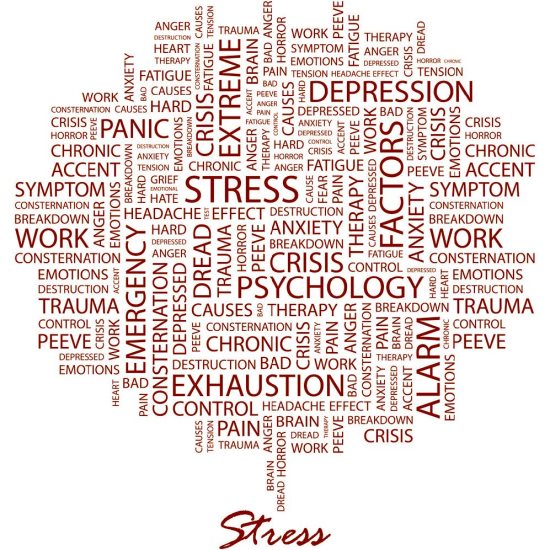
| ||||||
Our local public high schools are no exception.
On the 2015 Stanford Survey of Adolescent Behavior, for example, Campolindo and Miramonte high school students reported that 83 percent and 82 percent (respectively) "often" or "always" experience stress from schoolwork. Over 62 percent of Acalanes High School students agree that academic expectations are high and cause too much stress.
Anxiety has overtaken depression as the most common reason college students seek counseling services. An annual survey by the American College Health Association found a dramatic increase of undergraduates who reported "overwhelming anxiety" in the previous year - from 50 percent in 2011 to 62 percent in 2016. This figure includes a high percentage recalling their senior year of high school.
Noted psychologist and anxiety specialist Robert Leahy says that the seeds of worry are planted early: "The average high school student today has the same level of anxiety as the average psychiatric patient in the early 1950s."
'Wellness Centers' created on campus
In response, the AUHSD formed a Mental Health Task Force, chaired by Assistant Superintendent Amy McNamara, recommending changes that the board adopted. These changes led to the creation of Wellness Centers at each school, superseding the existing Counseling Offices.
"We wanted to put physical and mental health as a prominent part of our campuses," said McNamara. "Sometimes it's situational, like parents going through a divorce or a death in the family. We needed to address the health and feelings of the students and reduce the stigma about asking for help."
Students can download a mindfulness app and are given tools for self care. In more severe cases the staff can coordinate counseling on-site for treatment or recommend appropriate interventions.
John Barakos, a Mental Health Intervention Specialist at Campolindo, says, "We allow students to have a quiet place to talk or connect them with help." He cites mindfulness as an intervention for anxiety, along with breathing, basic meditative skills and even taking a class in yoga on campus.
One way of coping with anxiety in educational settings is the increasing use of 504 plans, an educational tool that allows accommodations for students with physical or mental conditions. For example, a student with anxiety issues could be allowed more time on tests or homework, or be allowed to leave the classroom when feeling anxious.
"A 504 plan is one response," says Barakos, "but if the symptoms are more serious we enact an Independent Educational Plan. Most often, though, we work on it through face-to-face counseling."
School years are more than homework, tests and grades
Allison Gans, Acalanes' mental health intervention specialist, has noticed a steady increase in the number of anxious students, citing the stress of balancing their academic life, athletic commitments and extracurricular responsibilities. "There is also the stress of being a normal teen and navigating peer pressure, social media and friendships," she adds. "I have seen situations where students are so stressed out and tired that they forget to eat!"
Other pressures facing today's teens include: social media pressure, body image (for both boys and girls), navigating friendships, pressure from parents to succeed, fitting in, drugs and alcohol, figuring out sexual identity, college applications and transitioning to college.
Challenge Success, a Stanford-affiliated nonprofit, made many recommendations for reducing anxiety and stress in high schools, including later start times, reduction in homework and project-based learning.
The AUHSD schools addressed these issues by adding later start times on Mondays and Fridays, instituting Academy periods on Wednesdays and Fridays to give students time to work on homework, and adopting project-based learning, as typified by the new Living Earth biology curriculum.
Students can come to the Counseling Center at any of the AUHSD schools to discuss mental health challenges they are facing. "We look at the consequences of their actions - good or bad - and explore what they can do differently," says Gans. "I focus on self-care strategies and emphasize the importance of school/life balance."
If students are in serious distress, Gans makes an effort to ensure they have additional support systems, contacting the parent if a student appears to be suicidal. "When the student returns from hospitalization for treatment of anxiety or depression, it's necessary for an effective plan to be in place for a healthy transition back to school," says Gans.
The school shootings add another layer to some anxious students, according to Gans: "It can be difficult to concentrate when worried about your safety."
Parental influence is essential
Parents can help alleviate stress and anxieties, or they can contribute to their effects.
"It's important for parents to know about the challenges these students face and support them to lead healthier lives," says Gans. She mentioned skills such as listening without judgment, being aware of mood swings, and hearing about their frustrations without trying to fix them. "A student is often particularly grateful when a parent shares a similar past experience."
Gans warns that if parents are concerned, they should consider whether there has been a major shift in personality and/or changes in eating or sleeping habits. "If so," she says, "I suggest going to their pediatrician for a check-in and exploring outside therapy as further assistance and support."
As a sign of the times, Barakos recalls working with an elementary student recently who wanted to tell a scary story. "I thought it was going to be a ghost story, like around the campfire, but instead he used his best scary voice and told about a boy who is in lockdown in his class and hears the attacker approaching. At the end, the attacker is found sleeping in the janitor's room."
Barakos worries that instead of a monster in the closet, it is now part of a young person's mythology that real monsters can show up at school.
Reach the reporter at:
